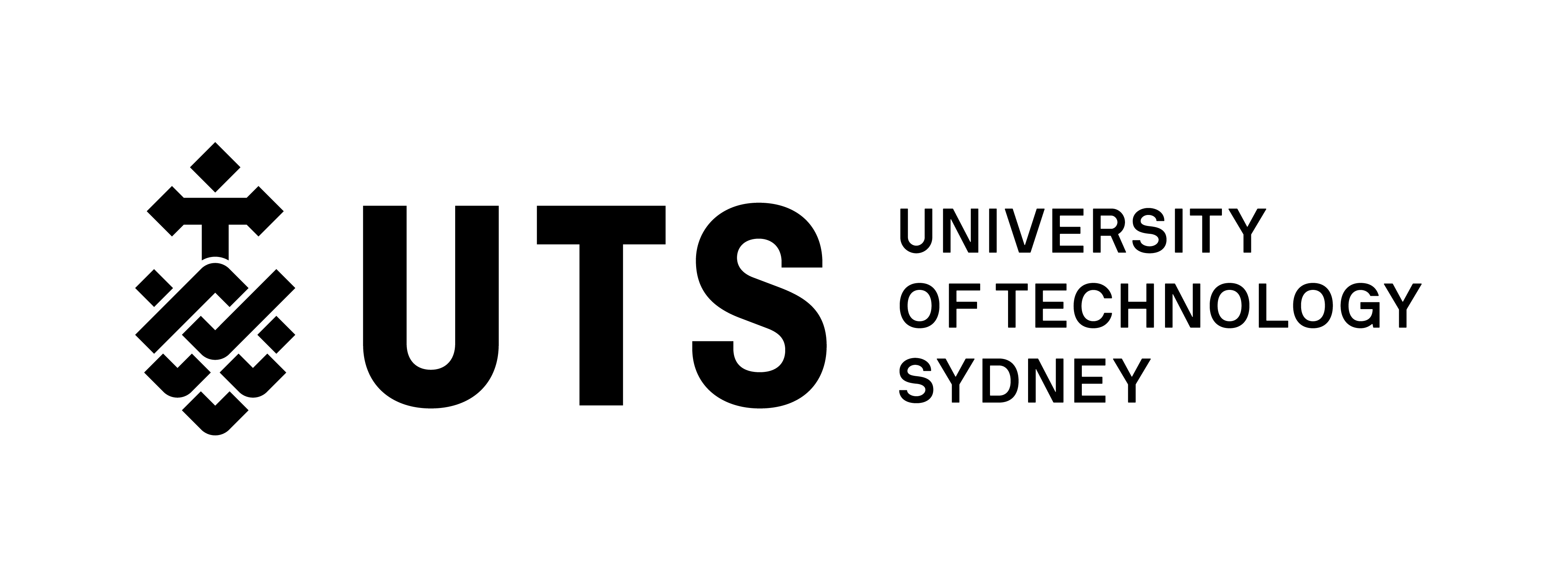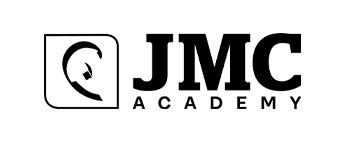My teaching role requires me to regularly deliver in-person and online Design and Creative Industries lectures and tutorials to 1st, 2nd, 3rd and honours year students. This includes the recording, editing and compressing of teaching demonstration videos and delivering of Zoom online learning classes. I have experience teaching national theory-based lectures, practical studio sessions and technical computer lab sessions to groups ranging from 5-90 learners.
More important than the curriculum is the question of the methods of teaching and the spirit in which the teaching is given.
Professional
Context





CAPABILITIES
In my role at UTS and SAE, I regularly plan and deliver online, blended, and face-to-face tertiary-level lectures, tutorials, library activities and technical workshops. I’ve designed subjects for SAE and UTS and have designed new courses for JMC Academy (Coding for Designers), and Academy Xi (Adobe XD and Introduction to Web Design), utilising my pedagogical knowledge and industry skills and experience.
In my National Unit Coordinator and course-writing roles, I plan and prepare a broad range of learning activities based on AQF5 and AQF6 criteria requirements regarding the relative complexity and level of autonomy needed to demonstrate these levels (Clarke, 2021). Black and Wiliam’s model (2018) influences assessment design, which incorporates a Design Thinking methodology (IDEO, 2018), active learning pedagogical theories and the wider context of HE. The value for students’ learning experience is that formative assessment feedback can modify and improve their work and foster a sense of cooperative learning where the student takes control of their own education (Black & Wiliam, 2018).
I ensure I constructively align learning activities, programmes of study and assessment with course curriculum, relevant discipline-specific Subject Learning Outcomes (SLOs) (Biggs, 2014), and according to the TEQSA/ASQA level of my learners. SLOs have been developed from the upper levels of the cognitive process dimension, and conceptual and metacognitive areas within the knowledge dimension of the Revised Bloom’s Taxonomy (Anderson & Krathwol, 2001), as it’s a widely accepted method for structuring learning objectives which consider different learning levels.
Assessment criteria are explicitly outlined within, and mapped to, subject criteria and weekly activities are designed and scaffolded to progressively focus on assessment-related skills and give students practice formatively reflecting on their learning. Students encounter each SLO in at least two formal assessments, which are designed to ensure they can still pass the subject if they achieve a poor result in one project. Students are regularly given opportunities to practice giving and receiving peer feedback via collaborative learning strategies such as Think-Pair-Share, Peer Teaching and Problem-based learning, and I encourage regular ongoing feedback on the subject material and my own teaching approach through informal discussion sessions.
Anderson, L. W., & Krathwohl, D. R. (2001). A taxonomy for learning, teaching, and assessing: A revision of Bloom’s taxonomy of educational objectives. Longman.
Black, P., & Wiliam, D. (2018). Classroom assessment and pedagogy. Assessment in Education: Principles, Policy & Practice, 25(6), 551–575.
Biggs, J.B. (2003). Teaching for quality learning at university. Buckingham: Open University Press/Society for Research into Higher Education.
Clarke, M. (2021). AQF levels. AQF. https://www.aqf.edu.au/framework/aqf-levels#toc-aqf-level-5-criteria-2
IDEO. (2018). IDEO Design Thinking. IDEO. https://designthinking.ideo.com/
As a lecturer, I regularly plan and deliver lessons based on prescribed curriculum and provide 1:1 advice and learner support regarding course progression and entry into professional practice. Active and collaborative learning pedagogical theories guide class activities to ensure students are engaged with the subject material (Baume and Scanlon, 2018; Misseyanni et al., 2018).
Many of my students have diverse, non-academic backgrounds, are neurodiverse, diagnosed with learning difficulties or experience mental health challenges. After completing an Online Learning pedagogy course, and learning about Active Learning (Prince, 2004), Differentiated Learning (Tomlinson & Imbeau, 2011) and Technology Enhanced Learning (TEL) (Salmon, 2004), I’ve ensured practical activities that can be modified to individual learning needs are included in all classes. Such activities, informed by VARK sensory modalities, encourage students to modify their learning approach based on diverse sensory preferences (Fleming & Mills, 1992). This approach prioritises student agency and assists them build their confidence by taking responsibility in co-creating their learning journeys.
I aim to create authentic and meaningful student experiences, using diverse digital tools to assist skill and knowledge building and aid in meeting SLOs through group work and collaborative activities. To ensure students are supported in their learning I clearly communicate expected class and course outcomes and share wide-ranging support materials, including lecture recordings, slides, project exemplars and links to resources discussed in class via a class Slack channel. I ensure materials are detailed, accessible, and available during and immediately after classes, using learning analytics to evaluate student engagement with class resources.
Baume, D. and Scanlon, E. (2018). What the research says about how and why learning happens. In: R. Luckin, ed., Enhancing Learning and Teaching with Technology – What the Research Says, 1st ed. London: UCL IoE https://london.ac.uk/sites/default/files/cde/What-research-says-about-learning.pdf
Fleming, N. D., & Mills, C. (1992). Not Another Inventory, Rather a Catalyst for Reflection. To Improve the Academy, 11(1), 137–155.
Misseyanni, A, Lytras, M. D, Papadopoulou, P, Marouli. C. (2018) (Eds.). Active Learning Strategies in Higher Education: Teaching for Leadership, Innovation, and Creativity. Emerald Publishing Limited.
Prince, M. (2004). Journal of Engineering Education, 1. https://www.queensu.ca/teachingandlearning/modules/active/documents/Does%20Active%20Learning%20Work.pdf
Salmon, G. (2004). E-moderating : the key to teaching and learning online. Routledge.
Tomlinson, C. A., & Imbeau, M. B. (2011). Leading and managing a differentiated classroom. Hawker Brownlow Education.
I regularly assess learners using quizzes, research reports, essays, verbal presentations, group projects and practical project-based assignments specific to my discipline. I provide ongoing informal and formal summative and formative holistic feedback to encourage student learning, develop feedback literacy and address gaps between students’ current and desired levels of subject understanding.
I believe providing feedback that intends to help others achieve their best is a generous act that pushes them to higher personal and professional levels than they could achieve alone. As such, within my weekly classes personalised verbal feedback on work-in-progress is provided to students in the form of learning checks from the trimester beginning. Improving students’ feedback literacy builds their confidence and agency (Berenato, 2020), so I regularly provide opportunities for students to practice giving and receiving peer feedback. In alignment with industry needs I educate my students on constructive criticism techniques and encourage them to identify their own strengths and weaknesses by undertaking regular self-assessment activities and critical reflection.
To ensure assessment is fair and consistent I contribute as a member of the Campus Moderation Committee and participate in a CoP, which undertakes peer consensus calibration. Within these meetings, we undertake benchmarking, rectify discrepancies, and make assessment and curriculum improvements. I regularly attend holistic marking training sessions to ensure I have an accurate understanding of my workplace assessment policy and attended a UTS workshop in 2023 on Supporting Student Learning with Warm Wise Feedback.
Based on improvements I see in student work throughout trimester, I evaluate my diverse range of feedback approaches as successful for different types of students within differing contexts. I also measure the success of my approach through peer and student feedback and improvement in student’s ability to offer one another specific peer feedback and critically reflect on their own work in project rationales and project reflections. For example, “I really appreciate you putting the time aside to write me really thorough and reassuring feedback. I understand where the mark came from…I can see what to improve now.”
Berenato, C. L. (2020). Feedback to “Feedforward”: Promoting Student Reflection and Learning Through Teacher Evaluation. In C. Dann & S. O’Neill (Eds.), Technology-Enhanced Formative Assessment Practices in Higher Education (pp. 88-99). IGI Global.
My teaching approach aims to provide authentic, student-centred learning experiences. This involves understanding and addressing students’ emotional needs, and promoting self-direction, self-reflection, and peer review. In student interactions, I strive to create cultural safety and connect authentically using respect and a Pedagogy of Kindness (Rawle, 2021), that fosters learner motivation and confidence. By being approachable and offering personalised support, I encourage students to take agency of their own learning and seek guidance when needed.
I analyse my teaching practice using the TSBT conceptual framework, which proposes there are overlapping entanglements and connection between the temporal, spatial, embodied or material dimensions within practice and that learning is implicit within this emergent activity (Hopwood, 2014). As my practice primarily occurs within a digital context, I’m interested in how bodies and materiality interact differently within virtual spaces and affect class pedagogy and learning.
Due to the practical, interactive nature of design, I use Laurillard’s (2012) Conversational Framework to structure class activities as it prioritises discourse and focuses on interaction with peers being essential for meaning-making in the learning process. A model of entangled pedagogy that encapsulates the mutual shaping of technology, teaching methods, purposes, values and context is also used (Fawns, 2022). Classroom Assessment Techniques (CATs), such as Zoom polls are used to monitor student engagement and ensure the content and pace of delivery is at an appropriate level so modifications can be made if needed.
Fawns, T. (2022). An Entangled Pedagogy: Looking Beyond the Pedagogy—Technology Dichotomy. Postdigital Science and Education.
Hopwood, N. (2014). Four essential dimensions of workplace learning. Journal of Workplace Learning, 26(6/7), 349–363.
Laurillard, D. (2012). Teaching as a design science: building pedagogical patterns for learning and technology. Routledge.
Rawle, F. (2021). A pedagogy of kindness: the cornerstone for student learning and wellness. THE Campus Learn, Share, Connect. https://www.timeshighereducation.com/campus/pedagogy-kindness-cornerstone-student-learning- and-wellness
I regularly undertake ongoing formal education-focused qualifications with the aim to take my learnings back to my classes to practically implement and evaluate the effectiveness of the methodologies, frameworks, and research I explore in real-time. Undertaking these qualifications has helped me better locate my teaching and learning practice within the complex and ever-changing context of HE and exposed me to varying ways teaching and learning is theorised, facilitated, and measured.
PD has improved my understanding of how students learn, and how to develop, implement and assess innovative learning projects that respond to identified learner needs. It’s compelled me to examine my values, purpose and practices as an educator and integrate new theoretical, practical and strategic approaches to improve my teaching and deliver better learning solutions. I participate in formal reciprocal peer evaluation to observe diverse teaching styles and critically reflect on aspects of my own teaching that may benefit from updates and examine how my areas of expertise overlap. A TPACK model’s utilised that evaluates my Technological Pedagogical Content Knowledge to ensure I can proficiently utilise technology to teach and engage my students.
I am a design educator, project manager and practitioner with over 17 years of teaching and industry experience.
View full CVEXPERTISE
SUBJECTS DELIVERED
- Principles of Design
- Drawing & Digital Media
- Pre-press and Print Production
- User Centered Design
- Coding for Designers
- Adobe XD & Introduction to Web Design
- Design Studio 1, 2 and 3
- Fashion Illustration Fundamentals 1 and 2
- Fashion Illustration Exploration
- Advanced Fashion & Textiles Techniques
- Honours year Major Project supervision
- Social Media Marketing & Content Creation
- Community Project
- Project Design and the Entrepreneur
- Scholarly Perspectives on Design
- The Ethics of Image and Text
- Fashion & Textiles Research & Conceptualisation
Design Educator
Provision of course planning and development, content creation and delivery of lectures and tutorials to bachelor and honours students. Responsibilities have also included subject coordination, recording, editing and compressing teaching demonstration videos and delivering Zoom online learning classes.
- University of Technology, Sydney
- SAE Creative Media Institute
- Academy Xi
- JMC Academy
- Sydney Community College
- Private Corporations
Design Practitioner
Creative Director of the graphic and web design studio Slate Creative, specialising in creating simple, authentic and intentional designs. We provide a full-service creative experience for our clients, from planning and concept development, to design, layout and production. We aim to remove stress from the process.
- Branding
- Print Design
- Web Design
- Exhibitions
- Digital Illustration
- Print Production
Project Management
Provided full spectrum design project management for clients across diverse industries and business structures on time and to budget. Develop and build client, supplier and contractor relationships. Hire, brief and manage creatives and production teams to ensure high-standard client outcomes.
- Production Management
- Photoshoots
- Event Production
- Sponsorship
- Database Building
- Marketing Strategy
Learning Profile
Upon returning from a gap year overseas, I completed a four-year Bachelor of Design in Visual Communications at UTS with first-class honours. After graduating I began working as a designer at a corporate company and as a teaching assistant at the university.
Over the last 15 years, whilst operating a design business and working as a casual academic at a variety of institutes, I have completed a Diploma of Interior Design, a Cert IV in Training & Assessment and a Graduate Certificate in Professional and Organisational Learning.
I have most recently been studying a Bachelor of Arts (Major: Philosophy) at Sydney University for general interest. After completing one-third of the degree I placed it on hold whilst I pursue a Graduate Certificate in Higher Education Teaching & Learning, and a Master of Education (Learning and Leadership).
In the future, I would like to explore a PhD that investigates the ethics and philosophy of Design.
Learning Goals
Skill Acquisition
Develop innovative teaching practices and additional differentiated learning methods to integrate into my classes.
Curriculum Development
Acquire course development and curriculum knowledge and skills that will assist me being appointed to the course committee.
Leadership Skills
Acquire leadership and mentoring skills that can be used within a pastoral care context as a Senior Lecturer.
Broaden Career Opportunities
Obtain a theoretical and practical understanding of learning design and pedagogical best practice outside of higher education.
Network Building
Connect with educational specialists from a range of professional roles and backgrounds.
Professional Development
Complete a Master’s degree and develop study skills that can be utilised within further postgraduate research studies.
Experience
2022 – CURRENT
SAE University College
Faculty Development Lead
Design and Creative Industries Lecturer
2007 – 2023
University of Technology, Sydney
Lecturer & Subject Coordinator
Systems Coordinator
2022
Academy Xi
Content Creation,
Course Planning & Development
2021 – 2022
JMC Academy
Lecturer, Content Creation,
Course Planning & Development
2014 – 2015
Sydney Community College
Design Lecturer
Course Development, Content Creation
2013 – 2016
Private Corporations
Created and delivered custom training workshops for fashion businesses